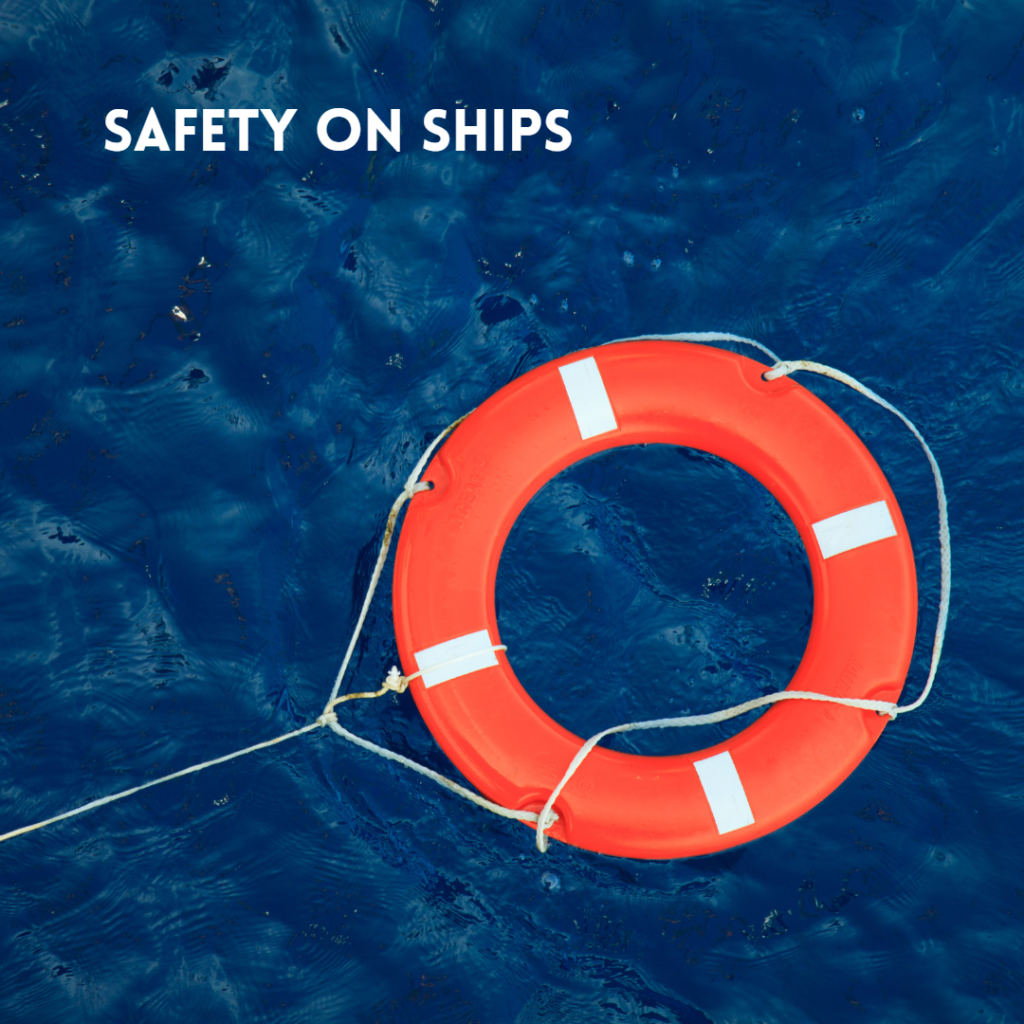Safety on ships
A ship is a very complex piece of machinery and requires expert handling, maintenance, and vigilance to ensure the safety of its crew and passengers, and/or the cargo it is carrying.


Safety is the primary concern for any ship owner, especially when it comes to the vessel’s crew. A good captain needs to have extensive knowledge of all aspects of running a ship – from navigation and cargo operations to maintenance and safety procedures. A captain who does not have the required training and experience may put his or her ship at risk by making mistakes that could lead to accidents or even loss of life.
However, safety on board a ship is not only the responsibility of the captain but also of the crew. They are all responsible for ensuring that all safety measures are implemented correctly, and they should all be trained in basic safety measures. Here is a brief list of the main safety procedures undertaken on a ship:
- The ship’s technical condition must be maintained to ensure that it can safely carry its cargo and passengers.
- The crew must be properly trained in all aspects of navigation and seamanship, including emergency procedures.
- The ships’ equipment must be maintained so that it is safe for use at sea and can function properly when required.
- The ship’s firefighting capability must also be maintained at an appropriate level for its size and type of operation.
Safe Navigation Systems
To delve a little deeper, here are some of the many safety measures taken to keep crews, passengers, and cargo safe on ships:
– A ship’s safe navigation is a vital element of safety. The International Maritime Organization (IMO) has identified four elements that make up a safe navigation system, including accurate navigational charts and effective communications with other vessels at sea. The IMO also states that ships must adhere to rules for the safe operation of their vessels, including ensuring that the vessel is fit for its intended purpose, operating within its design limitations, and carrying adequate equipment for any emergency situation.
– The most important element of a safe navigation system is the ability to respond appropriately to emergencies while at sea in accordance with international rules and regulations. Ships are equipped with fire fighting hoses, life rafts, or safety boats in case they need to evacuate their passengers. In addition, some ships carry medical teams who can treat injured people or handle situations where people may be trapped underwater in watertight compartments.
– There are specific standards for how close ships can be to each other when transiting through congested areas such as ports or harbors (such as those in Hong Kong). This is done so that vessels don’t collide with each other.
Safety on Board
Moreover, other safety measures are also taken onboard to keep crew, passengers, and cargo safe on ships:
- The crew is trained for the specific tasks required for safe operation. They must get regular training at sea and in port, as well as during emergencies.
- The crew wears lifejackets at all times, as well as other safety gear such as helmets and gloves.
- Safety drills are conducted regularly to ensure that everyone knows what to do in an emergency. They also include practice at sea where necessary.
- Passengers are seated in areas where they can be seen if there is an emergency. Passengers should sit near exits or on higher levels if they have difficulty seeing over the railings.
- Cargo is kept secure throughout the voyage by using special containers designed to withstand high seas and rough weather conditions. Cargo is also protected by nets and other means that prevent it from floating away.
These measures are put in place to ensure that in case of emergencies, the crew knows how to behave to limit damages as much as possible and nip emergencies in the bud. These measures are to be respected without fail, as the smallest of oversights can lead to disastrous consequences.

Leave a Reply